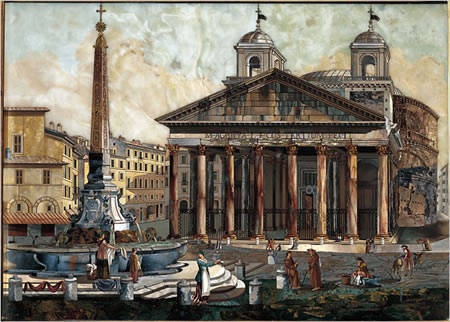I don’t know why but I seem to be on a pretty rocks kick lately. Today’s are brought to you by the Metropolitan Museum of Art’s exhibit of “pietre dure”, literally hard rocks, a decorative inlay technique using semi-precious hardstones like lapis lazuli and alabaster.
The exhibit has been a sleeper hit for the Met, probably on account of the jaw-dropping beauty of the artifacts.
At the show’s heart is the constantly shifting use of stone, especially the flat pietre dure. Sometimes stone is exploited for its own fabulous color and texture, as in the bold geometric tabletops of papal Rome or a Venetian cabinet that is really more a rock-solid architectural model than it is furniture.
Sometimes delicacy prevailed, especially in pictorially inclined Florence. There, the stones’ textures, colors, shadings and inherent light were extensively micromanaged into descriptive schemes that often challenge painting.
Examples include the fabulously accurate undergrowth of grape vines, butterflies and birds on a table with Eucharistic symbols, and a tiny austere landscape in which single pieces of lapis and agate form sky and hills. Inlaid details like a white church and green poplars sharpen the implicit spatial recession.
But the sentimental favorite has to be this amazingly realistic painting-like piece of the piazza in which I spent so many happy hours of my wayward youth:
Is that not a stunner? The craftsmanship, the eye for texture and color it takes to even see the possibility of something like this in a collection of rocks, just boggles my mind.
